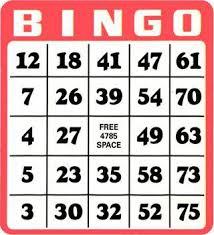The Toughest Sale an Entrepreneur Can Make….Investment Capital to Grow
I enjoy sales, I really do. I see sales as the ultimate example of serving others. You connect with people in your market that may have problems your product or service can solve, and you help them solve their problems. For me it’s the ultimate rush helping clients solve problems they have struggled with and felt they must learn to live with. However there is another sale entrepreneurs have to make that is not nearly as fun and can be emotionally and physically taxing if you do not know what you are doing…raising investment capital.
Typically the companies I serve have the capital and or are self funding and I am asked to create a repeatable sales process, based on how their buyers want to buy. Then I train their team how and when to use the sales tools we create for each step of the new sales process. In one instance however, a company I was asked to turn around lacked adequate access to capital to truly scale the business. So I approached raising investment capital as I would any market with various buyer personas , but in this case what I was selling was the viability of the business and future potential. I found there are basically five ways to fund your growth and each has its own characteristics, requirements, needs and challenges. Over a three month period while out making sales calls with customers, I met with as many “potential buyers” for funding as I could to understand shape and I even named my buyers, my ways to raise funds.( I had way to much car time, so stick with me)
Self Fund through sales revenue – “Willy Lowman”
State and Government Grants – “Annette to detail”
Friends and Family- “Have-I” , as in have -I got a deal for you…
Angel Investors- “Michael”, like the archangel
Venture Capital –”Barbra”, from the show shark tank
The first I called “Willy Lowman” from Death of a Salesman. You are out chasing revenue, cold calling, following up on every potential lead, and networking like crazy. You bootstrap your way, working 12-14 hours a day meeting with clients who could provide that next big order. At night you stuff envelopes with letters and brochures, and scour the internet using social media tools searching for the right contact to speak with at your future targeted accounts.
Characteristics– You often find yourself bunking on friends couches and driving great distances simply because the meetings need to occur but you lack the capital to afford air flights and hotel rooms. You have a passionate connection to your product and you have the ability to sell convincing presentations that drive early orders. You may hire independent sales representatives to sell your product on straight commission, but quickly find they too require time, your most precious asset at this point.
Requirements – You have to be skilled at taking inventory of what you have to work with and leveraging it to the best of your ability while always being cognizant of the businesses cash requirements, cash flow. You personally will do without. You need tenacity, good old fashioned (excuse the expression)… “piss and vinegar”. You will have many doors slammed in your face and you will need the ability to press on in the face of adversity. You know the “right” way to get orders, but you lack the capital today, so you do what you need to do. I have 50 other ugly truths in my eBook you can download off my blog. You have to possess the ability to create learning’s through each transaction and adapt quickly.
Need – samples, sell sheets and a clear understanding of the problem you solve, and who potentially has that problem. With some of the software out there today and help from friends in your network you can create some professional presentations and sell sheets. You must have a web site.
Caution – it’s not unusual to start a business this way trying to sell your way to success, however know that it is not for the faint of heart, and if you do it for too long you too run the risk of going nuts like our buddy Willy. If whatever you are launching cannot gain traction and begin to result in predictable sales revenues within 12-18 months, cut bait! Chances are you are pushing mud uphill and you have not answered one of the four questions with a yes.
So how about you…have you launched a business on shear tenacity? How did it turn out?
As you look back, how long were you in the bootstrap mode? (Or are you still in it?)
What did you find the hardest part of this phase?
What advice would you give someone who has desperately tried to scale their business, their dream for 18 months with no success?
The key to funding I have learned over time is to truly understand where your company is on the business growth continuum. Is your business pre-cash, do you have a few customers, some revenue… but needing capital to scale, ….?
Once you clearly understand where your business is, you can connect to the right kind of funding. As you move from self funding / friends and family to Government Grants to Angel investors to Venture Capital, you must clearly understand where you are at and what your buyer (investor) requires.
What I have experienced is friends and families are investing more in you and your abilities than the business. They are looking at your past success and your personal abilities. They have a personal relationship with you.
Government Grants/ other Grants are focused on answering a specific issue. You must be skilled at writing grant applications and clearly answering how your product falls into their grant offering.
Angels fund from small $20k investments up to $2 million from larger angel funds. Angel funds are groups of angel investors who pool their monies and invest in companies. Sometimes members of the fund may also wish to make “side car” investments in addition to the fund investment. Angels focus on;
- proprietary product and or technology
- leaders ability to lead organization, monetize opportunity
- the market and your product solution’s potential
- your team and its ability to execute
- your exit plan, who would be potential buyers, or do you plan to go public
Venture Capital traditionally invests in opportunities over $2 million. They are industry specific and the cost of their funds in terms of equity in your business is often much greater. They are focused on return on their investment. They have specific business valuation models and your engagement with them will feel more like a business transaction than a relationship. VC’s will receive 1,000’s of pitches each year and only work with a select few companies that match their criteria. I recommend you watch the show Shark Tank and pay attention to the discussions, the interaction as it will prepare you for possible discussions you may be having should you pursue VC funding.
If you are an entrepreneur and feel the next step to truly scale your company is funding, make sure you understand where your company is at, and what type of funding source best matches your needs. If you are like me, you will find it the most challenging sales process you have ever experienced!












